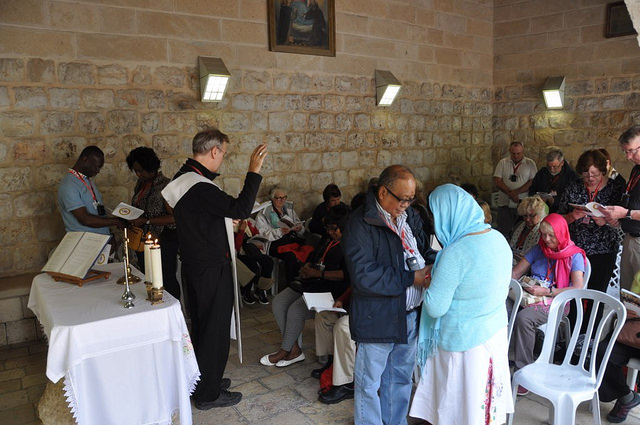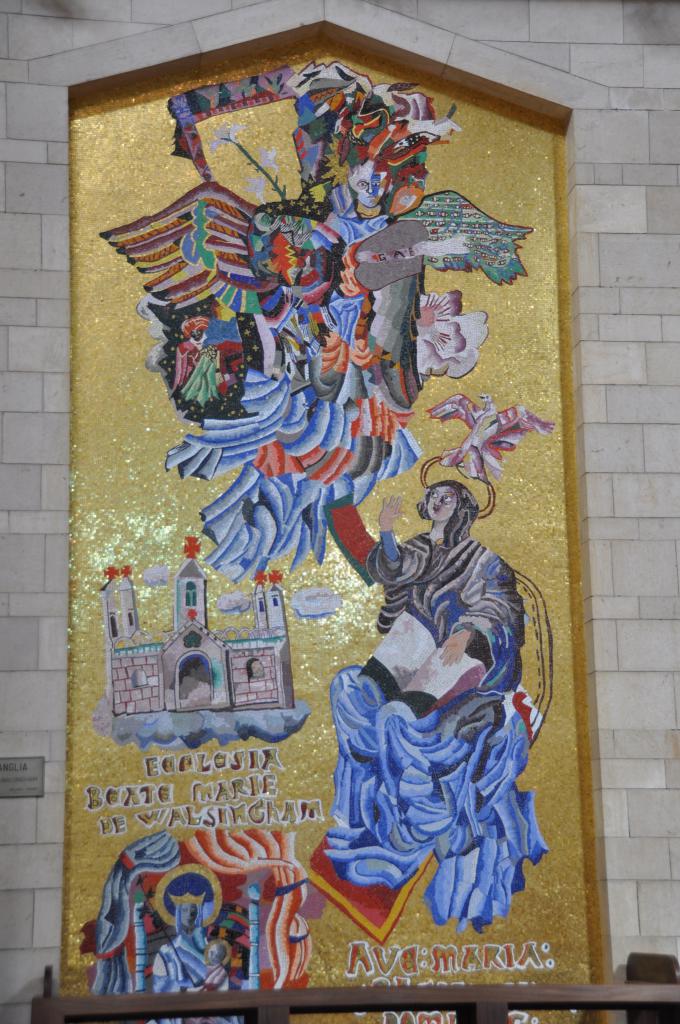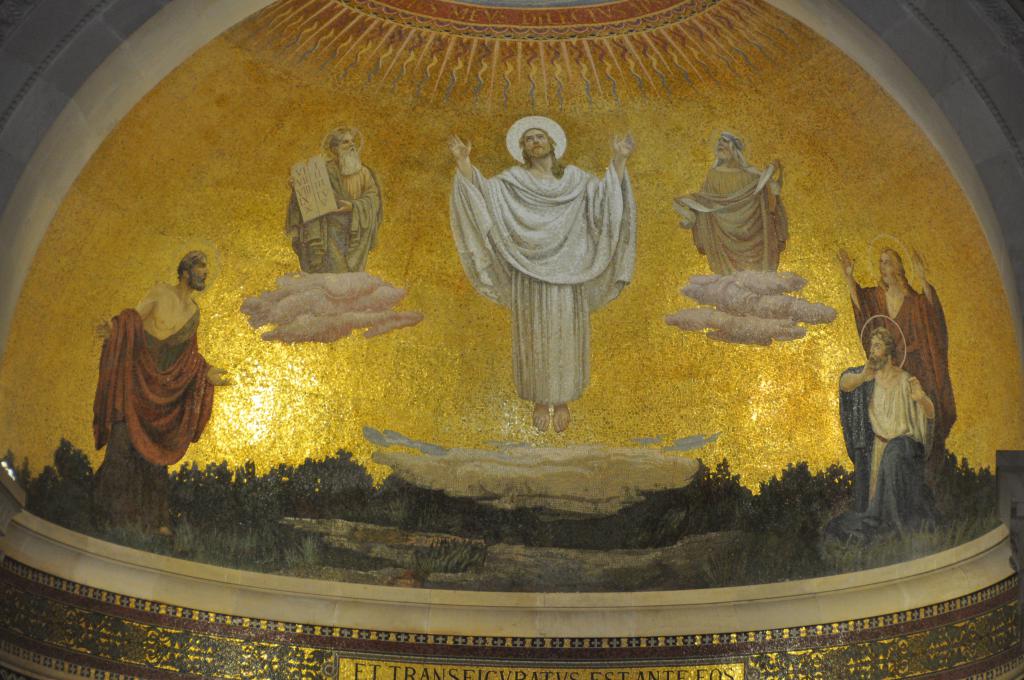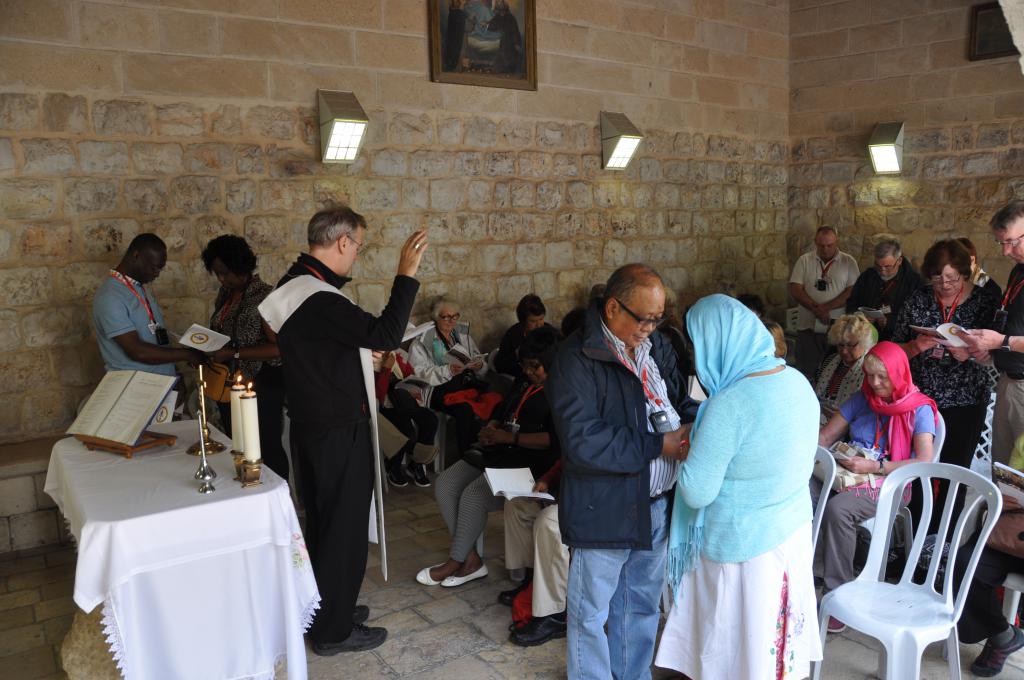This morning we travelled west of Tiberias to Cana, the place where Jesus turned water into wine at a wedding that he attended with his mother and disciples.
Gathered in courtyard of the Church of the Wedding Feast, Fr John read the account of the marriage at Cana from the first chapter of John’s gospel. When the wine runs out at the wedding, Mary points this out to Jesus, expecting him to do something. He responds to her saying ‘Woman, how does your concern affect me? My hour has not yet come.’ (Jn 2:4). The term ‘woman’ was the most respectful way someone could refer to their mother, unlike the negative connotations that modern language usage might imply. However, Jesus proceeded to turn six stone water jars into the best wine. John describes this as the first of Jesus’ ‘signs’ (John does not use the term ‘miracle’); it is the first time Jesus’ divinity is revealed to us.
Amongst the group were five married couples who renewed their marriage vows and received a blessing from Bishop Nicholas. Fr John pointed out that there is no mention of Joseph at the wedding at Cana, which suggests that Mary was widowed by this time. Therefore, prayers were said for those who had lost their spouses, remembering that ‘love is stronger than death’. 
Our next stop was Nazareth, the town where Jesus spent his childhood. Modern day Nazareth is much bigger than it would have been in Jesus’ time. When he lived there, Nazareth wasn’t well regarded and would have only been a village of around 350 people.
We visited the Basilica of the Annunciation, a striking and complex building, which is situated on the traditional Catholic site of the Annunciation. In the Greek Orthodox tradition, the angel Gabriel appeared to Mary at a well in Nazareth, rather than her home, so they have a separate church dedicated to the Annunciation elsewhere in Nazareth.
In the upper part of the basilica, we celebrated our Mass for the day, remembering particularly those whose names we had written in our prayer intention book the night before. In his homily at Mass, Fr John reflected on the Incarnation of Jesus as the ‘awesome mystery, more awesome that Creation itself’. Quoting Athanasius, Fr John explained how ‘God became human, so that we might become divine’. Jesus, like us, grew in his mother’s womb, and was nourished by her. He is fully human and yet was conceived of the Holy Spirit: ‘The Word became flesh and dwelt among us.’
 In the Basilica, each country has contributed a mosaic of Our Lady, showing that Mary our Mother is the centre of our family of prayerfulness, as Fr John explained. The English mosaic depicts Our Lady of Walsingham and the Slipper Chapel. Following the Mass, the group stood before this mosaic and recited the Prayer for England. Many of the pilgrims enjoyed finding their own nation’s contribution to the beautiful artwork of this church. Like the diocese as a whole, we are a group of many different nationalities.
In the Basilica, each country has contributed a mosaic of Our Lady, showing that Mary our Mother is the centre of our family of prayerfulness, as Fr John explained. The English mosaic depicts Our Lady of Walsingham and the Slipper Chapel. Following the Mass, the group stood before this mosaic and recited the Prayer for England. Many of the pilgrims enjoyed finding their own nation’s contribution to the beautiful artwork of this church. Like the diocese as a whole, we are a group of many different nationalities.
After a plentiful lunch in Nazareth, we headed towards Mount Tabor, the traditional site of the Transfiguration. Since the mountain is so steep, we had to be driven to the summit in mini buses, negotiating hair-raising bends, but providing stunning views across Galilee.
At the top of Mount Tabor is a beautiful, relatively newly built church, surrounded peaceful gardens filled with Bird of Paradise flowers and Bougainvillea. We were fortunate to be the only group in the church, and the pilgrims were able to sit and quietly reflect on what it would have been like for Peter, James and John to witness that miracle and to hear the voice of God address Jesus as his son.
Fr John reflected on this explaining the significance of the Jesus’ Transfiguration in our own lives. The voice of God which says: ‘This is my beloved Son, with him I am well pleased; listen to him.’ (Mt 17: 5) is addressed to all of us. We are called to be transfigured, to let Jesus shine through us in our lives, and to be the self that God wants us to be, transfigured by our Christian faith.

This was a fitting close to the day, looking up to the apse mosaic of the Transfiguration, and reflecting on how we can let Jesus shine through in our own lives.
Photos from the pilgrimage are available to view here.




